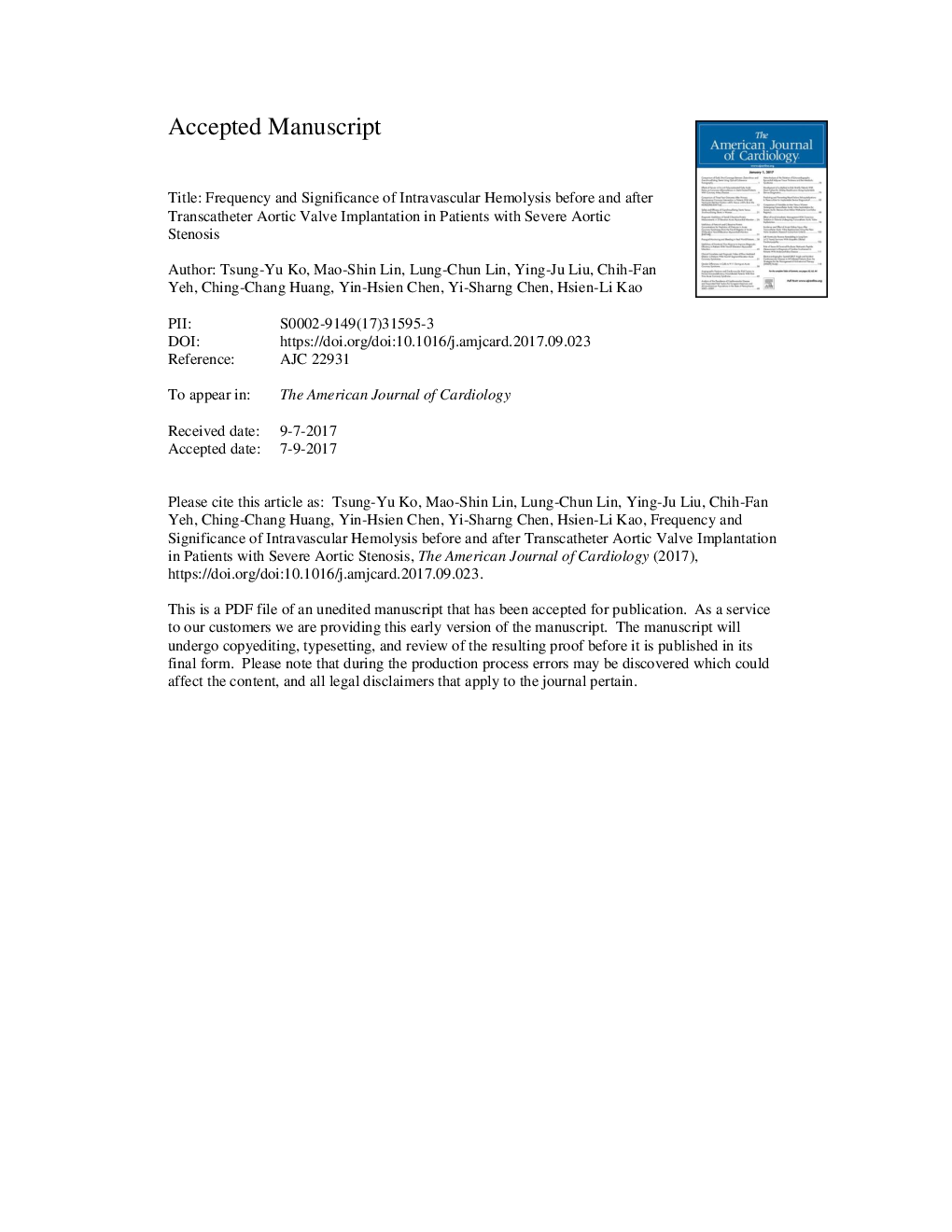| Article ID | Journal | Published Year | Pages | File Type |
|---|---|---|---|---|
| 8651593 | The American Journal of Cardiology | 2018 | 23 Pages |
Abstract
Intravascular hemolysis (IVH) has been identified in patients with surgical prosthetic valves, but few have been reported after transcatheter aortic valve implantation (TAVI). We conducted a prospective analysis of 64 TAVI patients. The hemolysis profiles were collected at baseline and 6 months after TAVI. The echocardiography was performed at baseline and 6 months after TAVI. There are 14 patients (21.9%) with IVH before and 24(37.5%) after TAVI. The serum haptoglobin values before and 6 months after TAVI are 126.7â±â75.1 vs 86.3â±â57.1âmg/dl (pâ<â0.001). More â¥moderate paravalvular leakage (PVL) (50% vs 7.5%, pâ<â0.001), bicuspid aortic valve (BAV) (33.3% vs 5.0%, pâ=â0.004), use of 23âmm prosthesis (29.2% vs 7.5%, pâ=â0.03), higher residual valvular pressure gradient (17.9â±â6.8âmmâHg vs 14.7â±â5.7âmmâHg, pâ=â0.05), and lower effective orifice area index (1.05â±â0.21 vs 1.21â±â0.29, pâ=â0.03) were observed in patients with post-TAVI IVH. On multivariate regression analysis, BAV and â¥moderate PVL are independently related to post-TAVI IVH. With log-rank test, 1-year rates of readmission due to cardiovascular cause were significantly higher in patients with post-TAVI IVH (odds ratio 4.5; 95% confidence interval 1.3 to 15.6; pâ=â0.02), after adjusting age and gender. In conclusion, â¥moderate PVL and BAV are predictors of post-TAVI IVH, which is associated with increased cardiovascular readmission in 1-year follow-up.
Related Topics
Health Sciences
Medicine and Dentistry
Cardiology and Cardiovascular Medicine
Authors
Tsung-Yu MD, Mao-Shin PhD, Lung-Chun PhD, Ying-Ju MD, Chih-Fan MD, Ching-Chang MD, Ying-Hsien MD, Yih-Sharng PhD, Hsien-Li MD,
